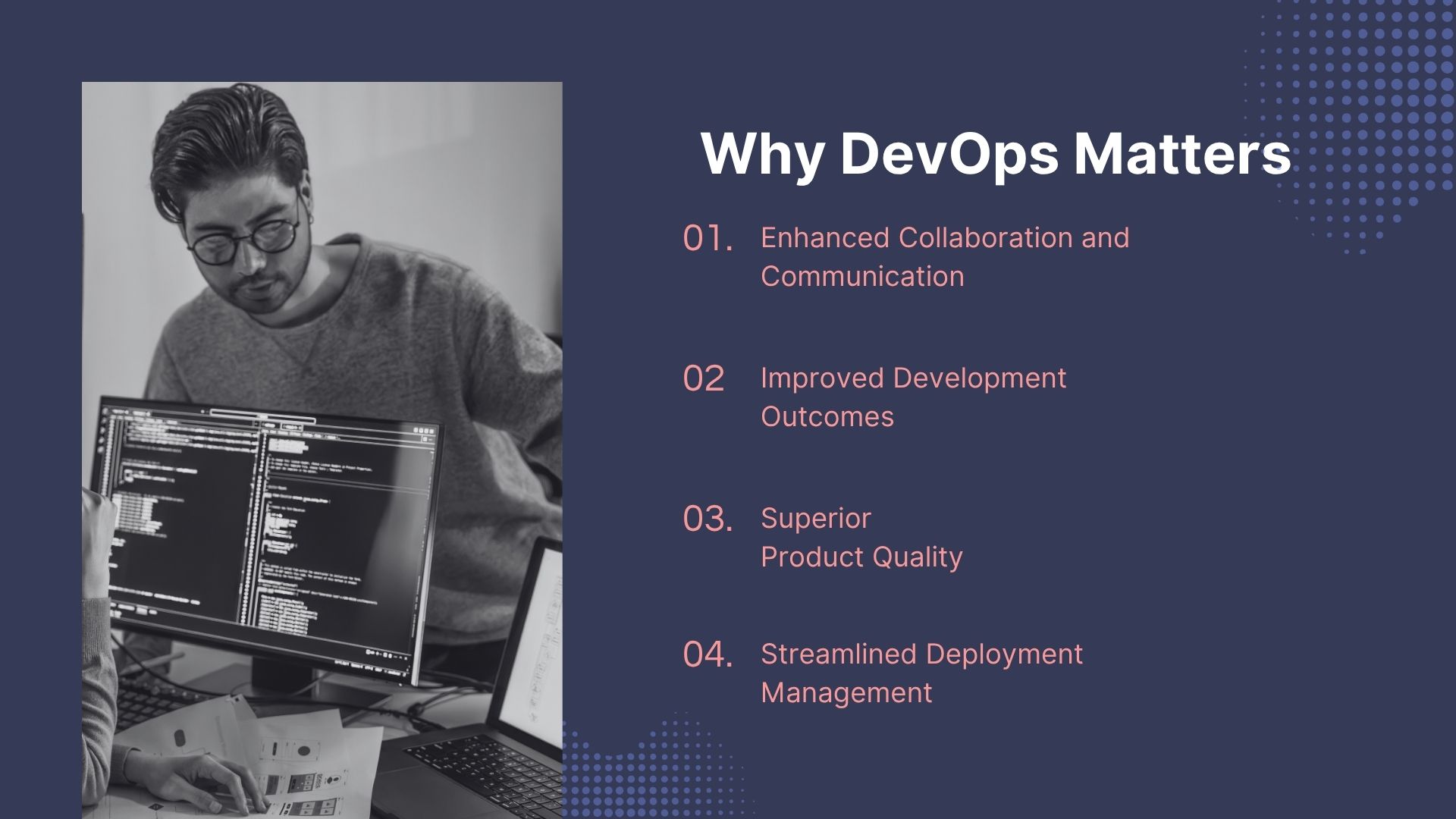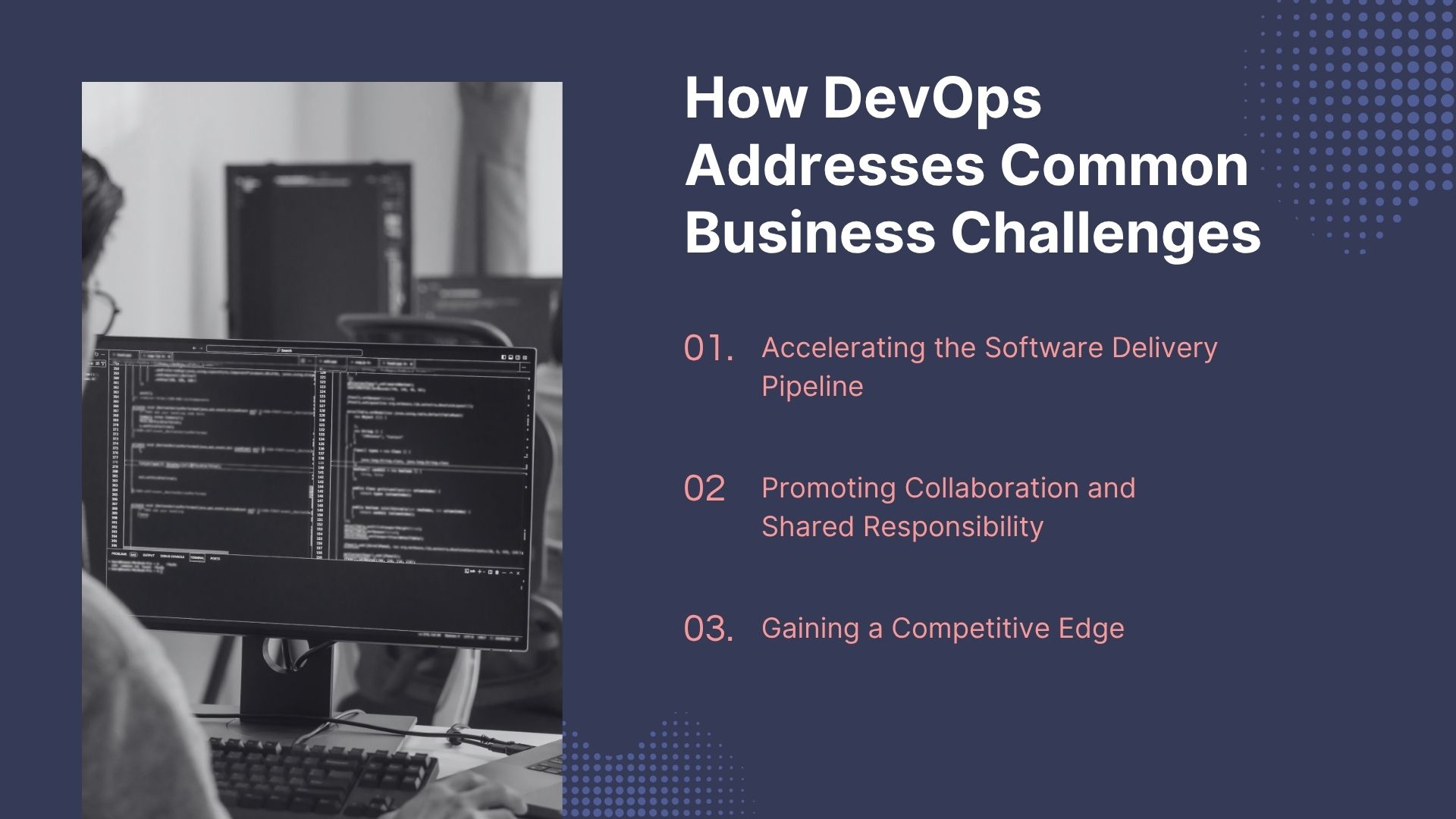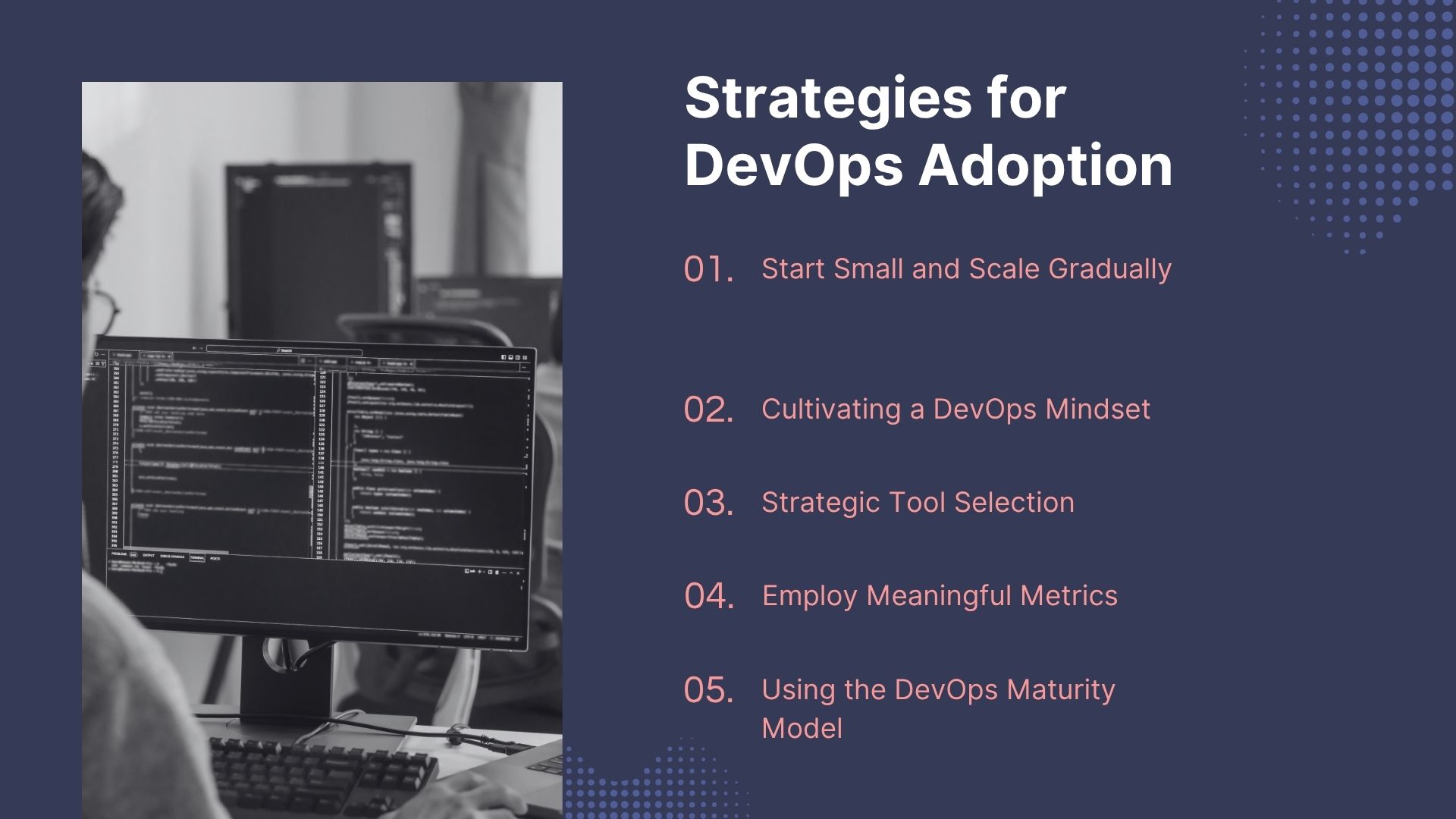
All Things You Need to Know about DevOps Adoption
DevOps, a blend of development and operations, signifies a unified or shared strategy for the responsibilities traditionally handled by an organization’s application development and IT operations teams.
Broadly speaking, DevOps is a philosophy that promotes enhanced communication and cooperation among these and other organizational teams. More specifically, it refers to the implementation of iterative software development, automation, and the deployment and upkeep of programmable infrastructure. The concept also encompasses cultural shifts, such as cultivating trust and unity between developers and system administrators, and aligning technological initiatives with business objectives. DevOps has the capability to transform the software delivery pipeline, services, job functions, IT tools, and best practices.
While not a technology itself, DevOps environments make use of common methodologies, like
- Continuous Integration and Continuous Delivery (CI/CD) or continuous deployment tools, focusing on the automation of tasks.
- Systems and tools that allow DevOps adoption, such as those for software development, real-time monitoring, incident management, resource provisioning, configuration management, and collaboration.
- Cloud computing, microservices, and containers, integrated with DevOps methodologies.
A DevOps approach is one of many techniques IT professionals use to execute IT projects that fulfill business requirements. DevOps can operate in sync with Agile and other continuous software development frameworks; IT service management frameworks like ITIL; project management principles like Lean and Six Sigma; and various other strategies.
Some IT professionals contend that simply combining “Dev” and “Ops” is insufficient, suggesting the term DevOps should encompass other areas like business (BizDevOps) or security (DevSecOps).
Why DevOps Matters
DevOps and its associated practices are important for modern enterprises because they significantly enhance software quality and improve development project results. These improvements manifest in areas as follows-

1. Enhanced Collaboration and Communication
DevOps breaks down the traditional departmental barriers that can hamper innovation and workflow efficiency. It brings together developers, IT operations, business leaders, and application stakeholders. This collaborative approach ensures that software is designed, developed, tested, deployed, and managed in a way that optimally serves both the business and its users.
2. Improved Development Outcomes
DevOps embraces an iterative, continuous development cycle. In contrast to traditional methods like Waterfall, which define requirements far in advance, DevOps projects typically begin with a minimal feature set and then progressively refine and add functionality throughout the project’s lifespan. This agility allows businesses to adapt more quickly to evolving market conditions, user needs, and competitive pressures.
3. Superior Product Quality
The cyclical nature of DevOps promotes continuous testing. Existing defects are addressed and new issues are identified proactively. Much of this rigorous testing occurs before each release, leading to frequent deployments of software with fewer bugs and greater availability compared to traditional development approaches.
4. Streamlined Deployment Management
DevOps seamlessly integrates software development and IT operations. This often empowers developers to provision, deploy, and manage each software release with minimal, if any, involvement from IT. This frees up IT staff to focus on other strategic initiatives. Deployments can be handled on-premises or using public cloud resources, depending on the specific project requirements.
A well-implemented DevOps environment enables businesses to launch more competitive and higher-quality software products to market faster, with reduced support and maintenance overhead, than is possible with conventional development paradigms.
How DevOps Functions
DevOps is a comprehensive approach designed to improve the efficiency across the entire software development lifecycle. Imagine the DevOps process as a continuous, repeating cycle. This cycle typically includes phases like planning, coding, building, testing, releasing, deploying, and operating. The monitoring phase feeds insights back into the planning stage, effectively restarting and refining the loop.
This iterative, cyclical nature of DevOps significantly reduces the pressure associated with software development outcomes. On the contrary, traditional methodologies like Waterfall development often involved an “all or nothing” approach where requirements were fixed upfront, followed by sequential coding, testing, and release. Any performance or reliability issues were mostly addressed as an afterthought. DevOps, however, provides organizations with much greater adaptability in developing and rolling out software that evolves progressively. This allows teams to iteratively adjust, modify, learn, and experiment with novel approaches, taking calculated risks that rigid, older development models couldn’t accommodate. Achieving this synergy relies on a blend of organizational culture and technological implementation.
To ensure software aligns with expectations, developers and stakeholders maintain open communication throughout the project. Developers then focus on creating smaller, independent updates that can be deployed individually.
To minimize delays, IT teams use CI/CD (Continuous Integration/Continuous Delivery) pipelines and other automation tools to streamline the movement of code through development and deployment stages. Teams can review changes promptly, utilizing established policies and tools to enforce standards and guarantee that releases meet the required criteria.
While rapid software creation is achievable, producing functional software is a different challenge. To successfully deploy reliable code into production, DevOps practitioners often utilize containers or similar technologies. This ensures that the software behaves consistently across development, testing, and production environments. Changes are deployed gradually, making it easier to trace and isolate any potential issues. Teams depend on automation and configuration management to maintain consistent deployment and hosting environments. Any problems identified during live operations drive improvements to the codebase, frequently through a blameless post-mortem investigation and continuous feedback mechanisms.
In a DevOps environment, developers might take on responsibilities for supporting live software, making them accountable for runtime considerations. On the other hand, IT operations administrators may participate in software design discussions, offering expertise on optimizing resource utilization and security. Everyone can contribute to blameless post-mortems. The more these specialized roles come together and share their knowledge, the more effectively they can cultivate a strong DevOps culture.
How DevOps Addresses Common Business Challenges
DevOps offers solutions to several pervasive issues that organizations frequently encounter, such as protracted release cycles, software that fails to align with user needs, and IT bottlenecks hindering business expansion.

a. Accelerating the Software Delivery Pipeline
DevOps streamlines the journey from initial requirements to live software by eliminating delays, manual interventions, and extensive review processes. These shorter cycle times help ensure that the final product closely matches the original vision, as requirements are less likely to change significantly during development. When evolving user expectations or market demands necessitate shifts in requirements, these condensed cycles facilitate the rapid implementation of updates and quicker market delivery.
b. Promoting Collaboration and Shared Responsibility
DevOps bridges the communication gaps and conflicting priorities often found between different IT specializations. In a traditional setup, development and operations teams often work in isolated silos. This can lead to situations where developers consider their task complete once functionality is delivered, leaving operations to troubleshoot performance issues or failures in the production environment.
However, a DevOps culture promotes a collaborative environment where developers take ownership beyond code delivery. When issues arise, the common “it worked on my machine” excuse is replaced by a shared understanding of the production environment. This collaborative approach ensures that changes deployed to production are typically small and easily reversible, and because the entire team is aware of these changes, incident management becomes significantly simpler.
c. Gaining a Competitive Edge
The accelerated process, from concept to deployed software, enables organizations to swiftly seize market opportunities. This agility directly translates into a significant competitive advantage, allowing businesses to innovate and respond to market demands more effectively.
Expanding the Scope of DevOps- DevSecOps, BizDevOps, and GitOps
Some organizations widen the application of DevOps principles to include other roles and departments, resulting in variations like DevSecOps, BizDevOps, and GitOps.
- DevSecOps includes security and compliance into the continuous DevOps loop. This means security planning, scans, testing, and reviews are performed throughout the entire software development pipeline. For developers in a DevSecOps environment, this involves incorporating security considerations at various stages, from code analysis to automated testing and threat modeling.
- BizDevOps focuses on connecting executives, application owners, and other business stakeholders directly with the technical team responsible for developing, testing, and supporting the software. The aim is to ensure effective, timely, and precise input from all collaborators.
- GitOps is a variation of DevOps, or perhaps a distinct facet of the movement, that centers on the use of Git as the single source of truth for both application and infrastructure code. It advocates for declarative source control, where everything about the software, from feature requirements to the deployment environment, is managed within Git. GitOps is often associated with change management and deployment techniques like immutable infrastructure, which dictates replacing or re-instantiating deployed code with each change, rather than modifying existing deployments.
Advantages of Adopting DevOps
DevOps has gained significant traction among development teams and organizations due to the numerous enhancements it offers compared to conventional software development approaches.
The advantages of implementing DevOps are
- Enhanced Collaboration– It promotes greater communication and reduces departmental silos within IT, leading to more integrated teams.
- Accelerated Market Delivery– Software reaches users more quickly, boosting business revenue and competitive standing.
- Responsive Iteration– Continuous feedback from users and stakeholders allows for rapid product improvements.
- Superior Software Quality– Increased testing leads to more robust software, improved deployment practices, and reduced system downtime.
- Streamlined Delivery Pipeline– The entire software delivery process, from builds and repository usage to validation and deployment, sees significant optimization.
- Reduced Manual Effort– Automation throughout the DevOps pipeline minimizes repetitive, low-value tasks.
- Efficient Development Processes– Increased accountability and code ownership within development teams contribute to more streamlined workflows.
- Expanded Skill Sets– Individuals often develop a wider range of skills and take on broader responsibilities.
Obstacles in DevOps Implementation
Despite its benefits, the adoption of DevOps presents its own set of difficulties. The shift to a DevOps model brings in complexities and organizational changes that can be challenging for busy enterprises to implement and manage effectively.
The common hurdles are listed below-
- Organizational Transformation– Adjustments to organizational structure and IT departmental roles, including the need for new skills and job descriptions, can be disruptive to both development teams and the wider business.
- Costly Infrastructure– This includes the expense of tools and platforms, along with the necessary training and support to utilize them proficiently.
- Tool Sprawl– A proliferation of development and IT tools can lead to management complexities.
- Problematic Automation– Automation, if not carefully planned and executed, can be unnecessary, fragile, poorly implemented, or even introduce security risks.
- Scalability Challenges– Logistical and workload issues can arise when attempting to scale DevOps across numerous projects and teams.
- Increased Deployment Risk– The “fail-fast” mentality and a move towards job generalization (where individuals with less IT specialization might handle production systems) can elevate deployment risks.
- Compliance Hurdles- Adhering to regulatory compliance, particularly when strict role separation is mandated, can be challenging.
- Emergent Bottlenecks– New bottlenecks can appear in areas such as automated testing or repository utilization.
Strategies for DevOps Adoption
Implementing DevOps or similar continuous delivery (CD) approaches can significantly impact software development and management teams. These shifts often introduce changes to workflows, processes, toolsets, and even staffing, necessitating additional training. Without a clear strategy, DevOps initiatives can falter.

i. Start Small and Scale Gradually
DevOps transformations don’t happen overnight. Many organizations find success by beginning with a pilot project, a straightforward application that allows teams to familiarize themselves with new practices and tools. The goal is to achieve early, tangible wins, refine workflows, master new tools, and demonstrate the value of DevOps principles. For broader adoption, consider a phased approach.
ii. Cultivating a DevOps Mindset
Successfully integrating DevOps requires a commitment from both development and IT operations teams to understand each other’s challenges and technical limitations throughout the software project lifecycle. It’s important to agree on key performance indicators (KPIs), such as reducing cycle times or minimizing production bugs.
Assess how DevOps practices align with current development and deployment methods, and then plan for necessary workflow adjustments that enhance software quality, security, and compliance. Effective communication across all roles is fundamental to establishing continuous processes.
iii. Strategic Tool Selection
Assess your existing software development and IT operations tools. You might discover a need for new or different solutions. Identify any process bottlenecks, like manual steps between code commits and testing, or tools lacking APIs for integration. Consider standardizing on a single DevOps pipeline for the entire organization.
This approach allows team members to transition between projects without extensive re-skilling, simplifies pipeline hardening by security specialists, and eases license management. However, this strategy may limit individual teams’ autonomy in choosing their preferred tools.
iv. Employ Meaningful Metrics
Adopting DevOps alone doesn’t guarantee success. Clearly define the problems DevOps is intended to solve or the benefits it aims to deliver. Select and track metrics and KPIs that directly reflect these outcomes, providing an objective measure of your DevOps success. For example, monitoring metrics like defect rates or code commit velocity can help gauge progress and manage outcomes effectively.
Once a DevOps mindset, tracking metrics, and capable tools are in place, the focus shifts to continuous improvement. Emphasize best practices, knowledge sharing, and skills development. Continuously optimize tooling and technologies, actively identifying and addressing roadblocks that impact your defined KPIs.
v. Using the DevOps Maturity Model
The DevOps maturity model outlines five primary phases of adoption, from initial stages to highly established practices. Organizations can use this model as a roadmap to understand their current position and guide their adoption journey.
- Initial– Teams work in silos, with reactive work and ad hoc tool and process choices.
- Defined– A pilot project creates a foundational DevOps approach, basic processes, and tools, serving as a proof of concept.
- Managed– The organization scales up DevOps adoption, applying the lessons learned from the pilot. The pilot’s successes become repeatable across different staff members and project types.
- Measured– With established processes and tools, teams share knowledge and refine practices. Automation and tool integration increase, and standards are applied through policies.
- Optimized– Continuous improvement is ongoing. DevOps practices and toolsets may evolve to suit specific use cases. For example, customer-facing applications might have higher release frequencies, while financial management applications adopt DevSecOps practices.
References
https://www.atlassian.com/devops/what-is-devops/history-of-devops
https://www.techtarget.com/searchitoperations/definition/DevOps
https://www.linkedin.com/pulse/evolution-devops-over-last-decade-from-silos-synergy-gokul-m-owuec/
